On the Future of Power
PUF posed a dozen questions about power's future to a dozen of the thought-leaders at Navigant. They divvied up the dozen questions. One question for each of them, and for their crystal balls. What do they see for the future of the electricity industry and its regulation? Let's take a look with them.
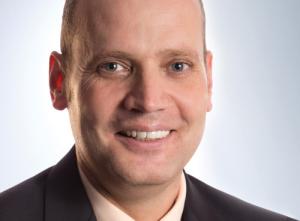
PUF: You have a short elevator ride alone with the chief executive of a major utility. What would you want to tell him or her?
Karin Corfee: Our industry is experiencing a major transformation, and it is exciting to see changes unfold globally. In fact, these are the most challenging times I have experienced in my thirty-year career. Affordability, reliability, and safety are still the key cornerstones of our mission as we transition to a low carbon economy. Given recent natural disasters, resiliency has been added to the list of priorities.
Increased deployment of utility-scale renewable energy generation, digitization, electrification of transportation, and wide-scale adoption of distributed energy resources (DER) are just some of the megatrends reshaping our industry. The result is a grid that is becoming increasingly clean, more intelligent, mobile, and distributed.
At Navigant, we call this more sustainable and dynamic energy system the Energy Cloud.
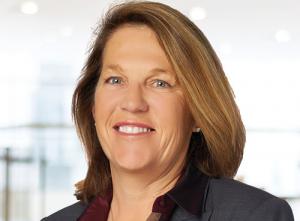 Karin Corfee: We have been challenged to develop both offensive and defensive strategies to facilitate positive outcomes for our businesses and the customers we serve.
Karin Corfee: We have been challenged to develop both offensive and defensive strategies to facilitate positive outcomes for our businesses and the customers we serve.
As leaders in the industry, we have been challenged to develop both offensive and defensive strategies to facilitate positive outcomes for our businesses and the customers we serve. New business models are emerging.
The most innovative of these will be introduced by new market entrants and focus increasingly on emerging Energy Cloud platforms, including: Integrated DER (iDER), Building-to-Grid, Transportation-to-Grid, Internet of Energy, Transactive Energy (TE), Neural Grid, and Smart Cities.
PUF: What will the utility of the future look like in 2030? How will it be different from today's utility? How will it provide value beyond electricity service?
Rob Wilhite: The Energy Cloud transformation is already changing the notion of the traditional utility from a regulated entity to one that is an energy innovations provider. These transformed enterprises will provide a wider portfolio of energy-related products and services that fulfill customer needs regarding energy supply, energy use, asset management, and risk management.
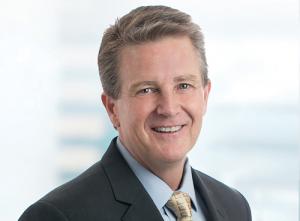 Rob Wilhite: Instead of treating utility regulators as the ultimate customer, energy innovations providers will focus on customers as the ultimate regulator.
Rob Wilhite: Instead of treating utility regulators as the ultimate customer, energy innovations providers will focus on customers as the ultimate regulator.
Energy innovations providers will increase value through dynamic collaboration with global technology providers and the disruption of traditional supply chain and pricing options. They will also embrace sustainable and socially responsible business practices.
Energy innovations providers will assiduously apply new technologies, predictive analytics, creative financing mechanisms, and high-speed telecommunications. They aim to enable their customers to reduce energy costs, reach sustainability goals, and manage energy assets in a sustainable and resilient manner. Innovation will be the primary competitive advantage for these future energy firms.
Energy innovations providers will resemble utilities of today, but with a broader and more comprehensive set of offerings that include utilities (electric, gas, and steam), facilities management (building security), developmental services (DER project financing), and risk management (appliance protection).
Regulated tariffs will give way to competitive pricing options configured for each customer's own needs. Instead of treating utility regulators as the ultimate customer, energy innovations providers will focus on customers as the ultimate regulator.
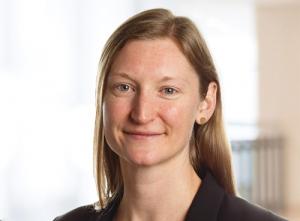 Debbie Brannan: While utilities are uniquely positioned to understand and serve their customers, they must take a proactive and innovative approach.
Debbie Brannan: While utilities are uniquely positioned to understand and serve their customers, they must take a proactive and innovative approach.
PUF: What does the future relationship between utilities and customers look like? What engagement tools will have the greatest impact?
Debbie Brannan: The energy sector is transforming - away from the centralized, linear, and one-way power system to a distributed, cleaner, interconnected, and two-way power flow. Smart buildings, the Internet of Things, and DER are revolutionizing the way people interact with their homes, facilities, and manufacturing facilities while extending the role this built environment can play in the grid.
Customers sit at the heart of this interactive, dynamic, and more connected energy ecosystem (the Energy Cloud). In this new environment, utility customers are no longer just consumers; rather, they are prosumers that expect their utilities to provide products and services through a convenient, accessible, and easy-to-use platform.
Customer engagement will become a much more complex process. While utilities are uniquely positioned to understand and serve their customers, they must take a proactive and innovative approach.
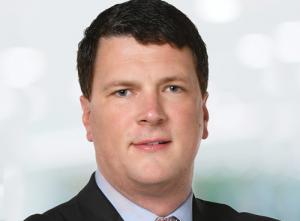 Ted Walker: Customer-obsessed organizations know what their customers want before they do.
Ted Walker: Customer-obsessed organizations know what their customers want before they do.
Customer engagement solutions likely to have the greatest impact are those that: focus on technology-led platforms and solutions that offer a simplified user experience, bundle product and service offerings within a single platform, and leverage data to engage with customers in a more targeted, personalized, and timely fashion.
PUF: How does industry transformation toward more clean, intelligent, mobile, and distributed energy threaten current utility organizational culture and management? How can utilities address these issues and prepare their organizations to embrace more customer-centric solutions?
Ted Walker: Traditional utility organizations and cultures are designed around reliability, assets, and risk minimization. These traits have served the industry well during the past century. Yet, the ongoing industry transformation and emerging service-based business models require a different and often opposing set of focus areas: innovation, customer-obsessed, solutions-focused, and risk-taking.
First, utilities need to develop innovation as a core competency. This means innovating not only existing offerings (better, faster, cheaper), but also new business models that better meet evolving customer needs.
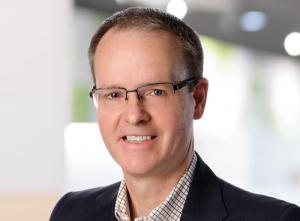 Todd Williams: True digitization and the benefits it brings in terms of cost and scalability remain an elusive goal for most energy companies.
Todd Williams: True digitization and the benefits it brings in terms of cost and scalability remain an elusive goal for most energy companies.
Second, it is no longer good enough to be close to your customers. Customer-obsessed organizations know what their customers want before they do. These organizations put the customer at the center of their business and organize around customer needs.
Third, utilities should structure themselves around solutions. Most organizations are organized primarily around capability-focused groups; for example, engineering functional groups. Solutions-focused organizations create cross-functional teams focused on solution areas; for example, an EV solutions team.
To bridge the gap, some utilities have created special "utility of the future" solutions-focused organizations while leaving existing silos intact. This is a short-term stopgap measure that does not address all issues.
Finally, utilities must be willing to take risks in developing new business models. As the saying goes, "If you've never failed, you've never tried anything new." Utilities should embrace a culture of agility that routinely deploys new approaches and business models, even if some of these initiatives never materialize into a new business opportunity.
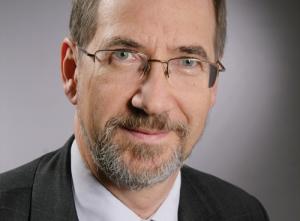 Konstantin Staschus: While wind and solar energy are the lowest cost renewables available today, they have limited capacity factors.
Konstantin Staschus: While wind and solar energy are the lowest cost renewables available today, they have limited capacity factors.
Failure is not only an option, but also expected, to sustain the utility enterprise in the future. The risks of failure can be mitigated by taking a fail-fast development and investment approach.
PUF: What lessons can be learned from European energy companies with respect to adapting U.S. utility business models in a time of transition?
Todd Williams: Most European energy companies recognize the significant changes that the energy transformation will bring and have launched aggressive strategic plans.
The industry has seen many acquisitions, investments, and partnerships by European energy companies in recent years, most notably in the area of DER integration and e-mobility. Most see this as a push for scale at speed within a specific geography or a specific market segment: for example, e-mobility.
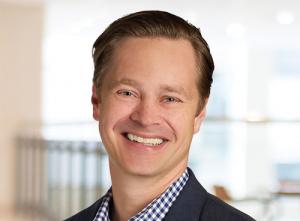 Dan Bradley: Regulatory environments differ, and, in many cases, the costs of the technologies must decline further to be affordable at scale.
Dan Bradley: Regulatory environments differ, and, in many cases, the costs of the technologies must decline further to be affordable at scale.
Based on Navigant's work with clients in these areas, there are four key lessons U.S. utilities can learn from this activity. First, investments will not help get you to scale quickly and may not bring the desired innovation to the parent organization. Utilities should carefully assess what they are looking for to ensure a potential investment will provide the desired outcomes better than other approaches, such as acquisitions or partnerships.
Second, acquisitions can help achieve scale quickly, but cultural differences and inertia can impede the desired flow of innovation and agility back to the parent company. Conversely, the parent company culture could conflict with the culture of the acquired company. Capturing full value from acquisitions remains a significant challenge.
Third, regardless of the sophistication of the technology and business models being deployed, true digitization and the benefits it brings in terms of cost and scalability remain an elusive goal for most energy companies. More partnerships with technology giants could help to address this, but there will be concerns about who benefits most from such partnerships.
Finally, the energy regulatory and policy framework varies from country to country, so the specific offers need to vary from country to country. This makes launching a uniform global offering that would bring significant economies of scale almost impossible. Thinking modularly about the business models and offerings can help achieve some economies of scale.
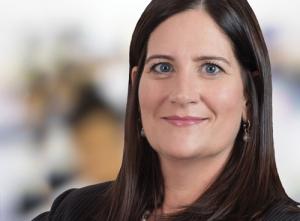 Shannon Graham: Through pilots, partnerships, and other arrangements, utilities can find multiple ways to try out technologies and business models.
Shannon Graham: Through pilots, partnerships, and other arrangements, utilities can find multiple ways to try out technologies and business models.
PUF: What wholesale and transmission adaptation best practices does Europe offer the U.S. with respect to accommodating higher penetrations of utility-scale and distributed renewable capacity?
Konstantin Staschus: While wind and solar energy are the lowest cost renewables available today, they have limited capacity factors. If they are to meet a significant proportion of electricity demand, their total installed capacity will need to be several times larger than peak loads. Such concentration means that there will be temporary and geographically isolated surpluses when the wind blows or temporary deficits when neither the wind blows nor the sun shines.
The European experience offers a model for how the U.S. market could support greater customer choice and enable ambitious levels of renewable energy penetration.
In Europe, two advantages support greater penetration of renewables: a clear common market structure and clear common network codes with joint transmission network plans. These make the evolution toward increased renewables capacity and systems integration easier for enabling solutions like DR, customer flexibility, and DER. For example, all EU member states have open retail markets.
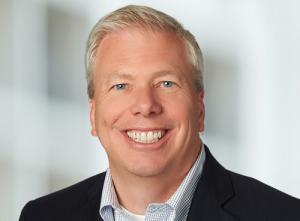 David O’Brien: The focus of regulation will shift from ex ante to ex post, and the role of the regulator will shift from litigant to monitor.
David O’Brien: The focus of regulation will shift from ex ante to ex post, and the role of the regulator will shift from litigant to monitor.
Meanwhile, day-ahead, intraday, and balancing energy trading within countries and across borders are governed by common laws or market network codes. That fosters greater harmony across markets.
As a result, system flexibility increases, especially since customers can react to fluctuating market price signals with increasing precision across Europe. This, in turn, supports greater integration of higher capacities of fluctuating renewables. Regional surpluses and deficits can be alleviated through long-distance power flows from parts of Europe with different weather patterns, thanks to clear market rules and well-functioning power exchanges.
Long-distance power flows only work if there is a transmission grid that is properly equipped to handle them. In addition to drafting network codes for connection conditions, system operations, and market functioning, Ten-Year Network Development Plans (TYNDPs) are drawn up by ENTSO-E, the European Network of Transmission System Operators for Electricity. ENTSO-E also covers connection conditions, market rules, and network planning.
Since the TYNDPs are drafted under the guidance and supervision of regulators, there are usually no issues when it comes to gaining regulatory approvals for the needed additional transmission lines. While strengthening the continental grid is a slow process due to procedures associated with permitting, it is ultimately a successful exercise that has enabled the open electricity market to function well.
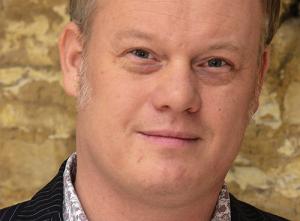 Jan-Willem Bode: When it comes to anticipating the risks of the energy transformation, it is important to look at the speed with which this transformation is unfolding.
Jan-Willem Bode: When it comes to anticipating the risks of the energy transformation, it is important to look at the speed with which this transformation is unfolding.
Unlike ENTSO-E in Europe, NERC's mandate in North American is more limited, concentrating specifically on system operations and security. The balkanization of regulatory jurisdictions across the U.S. grid also inhibits more aggressive deployments and integration of renewables.
PUF: Some say utilities should become leaders in DER at every scale, and some say utilities should stay out to foster greater competition. What is the utility's role in responding to more distributed renewables on the grid?
Dan Bradley: DER are synonymous with customers. Customers decide to purchase, install, and make use of these technologies at the home or in multifamily, commercial, or industrial settings. DER are also increasingly networked.
New business models and networking technology allow DER to operate in the aggregate to deliver grid benefits while also delivering more value back to the customers and system owners. Advances in customer adoption due to better value propositions, new financing arrangements, and new network technologies will help drive more value to the customer and the grid.
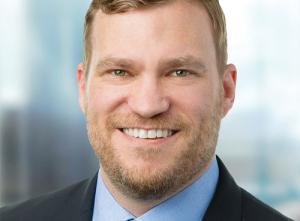 Mackinnon Lawrence: Technology innovation is moving at an exponential pace. However, utility and energy company business models remain stuck in a cost-of-service recovery approach that encourages the deployment of large assets and requires significant capital outlays.
Mackinnon Lawrence: Technology innovation is moving at an exponential pace. However, utility and energy company business models remain stuck in a cost-of-service recovery approach that encourages the deployment of large assets and requires significant capital outlays.
For a utility considering a greater leadership role in DER, it is important to look at what its business model is today and what it wants to be in the future. In the Energy Cloud, utilities that execute on strategies to own and control DER and provide customers exclusive products and services are building on the traditional, linear business models of asset builder and service provider. This is a proven approach, but it may entail slower growth and smaller margins.
On the other hand, some utilities are pursuing platform business models that seek to unlock the full network value of distributed energy by engaging and activating customers and then networking their DER assets. Somewhat untested in the power industry, there are few blueprints for success, but the payoff could be faster growth and attractive operating margins for investors.
The challenge is that today, neither model is perfect. DER are at various levels of penetration around the world. Regulatory environments differ, and, in many cases, the costs of the technologies must decline further to be affordable at scale.
What is the right approach for utilities? It starts and ends with the customer. The world's largest companies - Amazon, Apple, Netflix, Microsoft, and Facebook - engage customers to interact with their networks, then unlock value in different ways as their own networks grow.
With customer adoption of DER, the underlying pillars of the great new business model are visible today. Yet, it will take more work to articulate a scalable model that connects customers and their DER into a larger network. DER aggregation has the potential to support the network-orchestrator utility business model. If achieved, this model could change the way customers interact with and make decisions around their energy usage and investments.
These high customer standards related to delivered products and services, combined with the networks and tools needed to acquire and scale control of DER, have the potential to create the next big utility role, responding to more distributed renewables on the grid.
PUF: We're living in a time of exponential technology innovation. What immediate changes can utilities make to embrace technology innovation? Whether through strategic partnerships or acquisition, how can they more proactively position their business to fully realize the potential disruptions to the status quo? Possible examples include two-way power flows, transactive energy, grid defections, and other factors.
Shannon Graham: The answer starts with strong internal leadership that invites innovation, allows for risk, and rewards change.
Disruptive technologies and business models are evolving quickly in our industry and are increasingly available from established vendors and new industry players. Innovations providers are constantly working to get time with already overextended utility executives. Promises of innovations across the utility business are piling up on desks. The challenge is not the supply.
The challenge for utility leadership is keeping pace. Utilities were built for reliability and consistency, not for regularly absorbing innovation. In an analog world in which the current utility was born, testing new concepts was expensive and risky. Playing it safe was the faster and most assured route to promotion.
However, moving into a digital world, testing technologies and business models is faster and easier. Risk tolerance can go up. Through pilots, partnerships, and other arrangements, utilities can find multiple ways to try out technologies and business models.
Examples include a virtual power plant at a single campus, behavioral solutions for a sample customer base, and simultaneous partnerships for testing a new distributed energy offering. The key is making rapid iterations to test the solutions for tomorrow before aggressively scaling those that demonstrate the most promise.
The top leaders in utilities need to change the culture of their organizations by inviting innovation, allowing risk, and rewarding change. Without this shift, the absorption of innovation into the business will continue to be slow. By embracing cultural change, utilities can bring their strengths into an exciting period of industry disruption and innovation as active and leading participants.
PUF: What will the role of the regulator be in 2030, especially in establishing and monitoring the grid platform to accommodate more dynamic and networked energy systems? What legacy assumptions should regulators reconsider?
David O'Brien: At Berkshire Hatha-way's recent annual meeting, renowned business sage Warren Buffett was being tough on large corporations. He suggested that they could do away with a lot of process, meetings, and paper work.
Buffett and his partner Charlie Munger drew great applause from shareholders, who seemed to intuitively understand the message. Less is more, especially in our modern digital society where so much has been automated, revealing what now has marginal value. The same is true for utility regulation.
At Navigant, we envision a digital transformation of the energy vertical, where utilities operate as multifaceted platforms. They will increasingly be expected to facilitate a dynamic DER marketplace on behalf of customers and society.
Long-standing assumptions centered on the utility as the only provider, rates based on sales volume, and earnings tied one-to-one with CAPEX will no longer hold. And perhaps most importantly, lengthy utility planning and regulatory processes do not allow for rapid evolution in platform operations or customer offerings.
We see modernized forms of performance-based ratemaking as ideal in this environment, shifting the focus from inputs to outputs with incentives tied to policy objectives and market facilitation.
The focus of regulation will shift from ex ante to ex post, and the role of the regulator will shift from litigant to monitor. Under a more aggressive shift, one could imagine the role of state regulation resembling that of a regional transmission organization establishing targets, market rules, and protocols.
PUF: How can financial institutions and utility investors support utilities and energy companies as they adapt to change? How should financial interests think about the risks posed by climate change?
Jan-Willem Bode: When it comes to anticipating the risks of the energy transformation, it is important to look at the speed with which this transformation is unfolding. A rapid transformation, required to hit the Paris targets, entails significantly greater risks than the status quo due to a rapid decrease in use and thereby a decrease on returns for existing assets.
When addressing issues around physical infrastructure risk, financial interests should look at supporting the deployment of more resilient infrastructure and supply chains. Better infrastructure is required to deal with unpredictable climate events. Those include natural disasters such as the hurricane in Puerto Rico and shifting seasonal norms such as record heat events in Pakistan.
Financial interests will need to address this unpredictability by supporting utility and energy companies. They will need to introduce greater redundancy, grid hardening, and flexibility, including an increased focus on decentralized assets. Aggregation plays will therefore be much more important in the future than they are today.
Yet, the opportunities are plentiful. It is becoming increasingly clear that new revenue models supported by business model innovation will lead to different types of capital allocation.
New models will be a prerequisite to hit Paris targets and represent an opportunity to hit higher ROIs for investors in the power sector. These higher returns will mainly be found in the distribution sector: microgrids are one example. They can also be found in behind-the-meter investments, as well as in platform plays.
PUF: It's 2030. What opportunities do today's technology innovations present for tomorrow's utility business model?
Mackinnon Lawrence: Technology innovation is moving at an exponential pace. However, utility and energy company business models remain stuck in a cost-of-service recovery approach that encourages the deployment of large assets and requires significant capital outlays.
The emerging technology ecosystem, meanwhile, consists of a far cleaner, more intelligent, increasingly mobile, and highly distributed asset mix. Examples include connected distributed solar parking carports equipped with vehicle-to-grid EV charging that will support two-way energy transactions.
Resembling a networked ecosystem of customers and connected things, the future energy system will require business models that generate revenue from many-sided exchanges of value instead of the one-way delivery of a commodity product.
The long-term viability of this latter approach is already challenged by a trifecta of threats to the traditional utility. Those include flat or decreasing demand for energy, increasing costs of maintaining existing infrastructure to deliver energy, and a rapid increase in renewables and DER.
The utility of 2030 will need to more closely align shifting customer demand with an increasingly multidimensional product and service ecosystem. By orchestrating the exchange of energy, services, data, and financial value at the confluence of emerging technologies, utilities can reduce their CAPEX while tapping into a much stickier relationship with customers and partners.
This means being in the connection business, not the power business. It means putting the customer at the center of everything the utility does. It means putting technologies in the customers' hands.
And it means building better products and services that enhance the customer experience and that offer customer benefits. This is hard work, but scale and existing customer relationships mean utilities are uniquely positioned to take advantage of this emerging, dynamic energy ecosystem today.
PUF: What are the existential opportunities and threats confronting utilities? What does Navigant see as some of the initial steps needed to prepare for energy transformation? What are clients' major blind spots in strategic planning?
Jan Vrins: As the power industry transformation picks up pace, utility and energy companies are faced with a narrowing window to position for long-term success. With increasing penetration of renewables, a more digitized infrastructure, electrification of transportation, and proliferation of DER, the power industry will both expand and collide with other industries, ushering in a wave of competition and innovation.
Things will work differently than they do in today's utility business. To prepare for this reality, utilities must begin rethinking many of the time horizons and approaches that have anchored strategic planning in the past.
Rate-based investments in centralized assets will increasingly give way to a portfolio of investments in emerging technologies with shorter lifecycles.
DER technologies are the focus of planning today. But their value and impact will expand when paired with connectivity and the ability to manage as an integrated part of the larger grid, smart and flexible control systems, data analytics, and machine learning. Scale will increasingly turn on the ability to orchestrate networks of connected customers and platforms with integrated DER assets.
Utilities should act now by assessing the changing technology landscape and planning for multiple future scenarios. Long-term, integrated resource plans and five-year strategic plans are not sufficient to address a more dynamic Energy Cloud.
Utilities must be prepared to play both offense, pursuing new revenue streams through the development of new business models, products, and services - and defense, engaging more proactively with customers and regulators to understand customer choices. Most importantly, utilities should foster a culture of innovation within their organizations while becoming obsessed with customers, data, and value.
Finally, strategic partnerships and acquisitions are not sufficient for utilities to navigate an uncertain future successfully. Creative bundling of innovative solutions, delivering value in novel ways, and developing more dynamic business models capable of supporting emerging Energy Cloud platforms are all critical to delivering future value and navigating the energy transformation.
. . .
Karin Corfee is a Managing Director in Navigant's global Energy practice and is based in San Francisco, California. Key areas of expertise include strategic planning, renewable energy, distributed generation and energy efficiency. Karin currently serves as the global leader of Navigant's Clean Energy Programs team. The team is comprised of engineers, economists, and social scientists focused on a wide range of clean energy services. Over her 30-year career, she has helped develop policies to facilitate increased deployment and optimization of energy efficiency and distributed energy resources (DER). Strategic planning engagements include the California Energy Efficiency Strategic Plan, CAISO Five-Year Strategic Plan and the New Jersey Renewable Energy Plan. Karin has recently focused on examining new business models, including financing initiatives, third-party ownership structures and community solar.
In his role as a Managing Director in Navigant's Energy practice, Robert Wilhite leads the global utilities client segment and serves on the Energy practice leadership team. On a global basis, Rob has often advised energy clients in achieving increased efficiency in strategic and master planning, grid automation, and technology strategy and implementation. He is coauthor of the book Utility of the Future: Directions for Enhancing Sustainability, Reliability and Profitability, and was recognized as one of the Top 25 Consultants in the U.S. by Consulting Magazine in 2009 and as one of the Networked Grid 100 Movers and Shakers of the Smart Grid by Greentech Media in 2012.
Debbie Brannan is a director in Navigant's Energy practice with expertise as an applied econometrician and behavioral scientist. She helps Navigant's utility clients continuously improve their demand side management program offerings in the complex and evolving energy landscape, delivering innovative and actionable solutions. In her work, Debbie also focuses on behavioral and customer engagement programs, energy management tools, smart thermostats, and connected homes.
Ted Walker is a managing director in Navigant's global Energy practice and a key leader in the areas of strategy, policy, and regulation. Ted uses his expertise to hone in on energy company growth opportunities and help clients thrive alongside the changing role of the utility in an evolving energy ecosystem. Throughout his career, Walker has worked across the utility value chain, with particular concentrations in energy retail, transmission and distribution, customer front and back-office, and shared services. He has significant experience working with medium and large electric and gas utilities to develop and plan strategies that extend beyond the business as usual mindset.
Todd Williams is a managing director in Navigant’s global Energy practice and the utilities and energy company lead for Europe and the Middle East. For more than two decades, Todd has served as a trusted strategic advisor to utilities, energy service providers, and generation developers in developing innovative business models and launching new businesses to take advantage of emerging energy technologies and transformative market changes. He has also advised governments and regulators on effective policies and regulations to reflect market and technology changes. In addition, Todd has served as an expert witness on generation valuation and various regulatory matters.
Konstantin Staschus is a director in Navigant’s global Energy practice, advising European utility clients on strategies to lead and shape the energy transition towards more renewables and climate protection. One key direction is how to leverage digitalization, especially the Energy Cloud and platforms in both the regulated network business and the competitive utility business. Drawing on more than 30 years of industry experience including eight years as Secretary-General of ENTSO-E, the European Network of Transmission System Operators for Electricity, Staschus leverages strengths in multicultural management to combine business value with public interest thinking, relying on a technical, economic, and analytical approach.
Dan Bradley is a managing director in Navigant’s Energy practice, where he focuses on developing and operationalizing strategies for investments, business initiatives, products and development, and professional services across the utility, investor, and manufacturing sectors. Dan’s industry experience enables him to help clients and businesses position themselves at that forefront of the energy transformation. Strategy, market research, sustainability and procurement services are some of Dan’s focus areas. Currently, Dan is Director in Charge of the REV Connect program, where Navigant has partnered with NYSERDA to accelerate innovative energy partnerships in New York State.
Shannon Graham is a director in Navigant’s global Energy practice. As an energy industry expert, Shannon has more than 20 years of advisory experience, and has worked in more than 20 countries. She focuses on transformational aspects of the electricity industry, including the integration of distributed resources into the electric grid and into utility business models – especially as it pertains to utility diversification. Shannon is based in Navigant’s Dubai office which is also Navigant’s regional Energy Hub for the Middle East and North Africa region.
David O’Brien is a director specializing in strategy and operations within Navigant’s global Energy practice. He advises clients on how to prepare for and optimize the transformative change taking place in the energy industry. David helps clients examine the changing physical and financial domains of the distribution grid and consider the business models and regulatory frameworks that will sustain their business. He is an industry thought leader with numerous published articles that focus on opportunities to leverage grid modernization capabilities and advance policy goals to meet the increasing expectations of customers and foster an emerging 21st century energy marketplace.
Jan-Willem Bode is a director in Navigant’s global Energy practice and leads the activities for the large corporations and financials sector. He brings over 20 years of experience working on climate and energy finance, corporate sustainability, project development and project finance. At Navigant, Jan-Willem focuses on climate risk and opportunities assessment of investment portfolios, revenue and business models within the context of the energy transition and change management processes for large corporations.
Mackinnon Lawrence is a senior research director, leading Navigant Research’s syndicated products and content management across the group’s portfolio. With more than a decade of experience as an analyst and attorney serving the international energy sector, he has played a lead role in guiding the Energy practice’s global research agenda. His work has focused on the Energy Cloud and emerging technologies that are transforming the power grid. He is a frequent speaker at industry events and is often quoted in major media outlets including The New York Times, Forbes, and Scientific American.
Jan Vrins is a managing director and Navigant’s global Energy practice leader. He advises utility executives on developing strategies for ensuring long-term operational and financial success in a rapidly changing landscape. Jan developed the Utility of the Future Framework to help clients understand how the trends in the market and evolving business models can improve commercial and operational performance. His utilities industry experience includes investor- and government-owned utilities in North America, Europe, and Latin America. Jan has authored various publications and presented at leading industry conferences. With extensive consulting experience (25+ years) in the energy sector and a history of growing businesses in diverse international markets, Jan is a global leader in today’s energy consulting industry.



